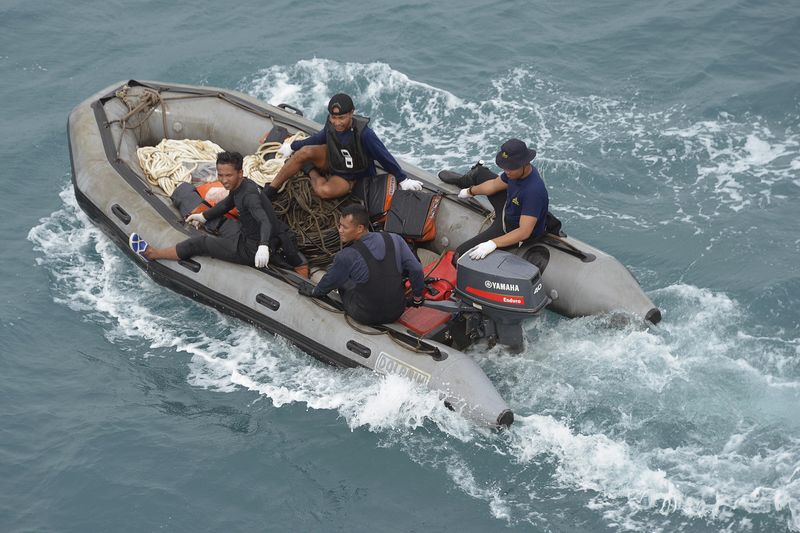By Allison Martell and Allison Lampert
TORONTO/MONTREAL (Reuters) - A long-delayed proposal to outfit commercial airliners with ejectable black box recorders may have a better chance of being adopted following the AirAsia crash in the Java Sea, according to three sources at the U.N. global aviation body.
The idea, which would equip commercial flights with black boxes that detach from the plane and float in water rather than sink, has bounced around International Civil Aviation Organization (ICAO) committees for years and is back on the agenda at its High-Level Safety Conference in February, the first of its kind in five years.
ICAO wants to develop a global system to improve plane tracking and ensure accident sites are found quickly as part of its response to the disappearance of a Malaysian airliner last year.
"The time has come that deployable recorders are going to get a serious look," said an ICAO representative who spoke on condition of anonymity due to the sensitivity of the issue. Deployable is the industry term for black boxes that detach from the plane when it crashes.
A second ICAO official familiar with the discussions said that public attention has galvanized momentum in favour of ejectable recorders on commercial aircraft.
"I think there's a more positive attitude now because of the last few accidents," he said in reference to AirAsia and an Air France flight that crashed in 2009 in the Atlantic. The Air France black boxes weren't found until 2011.
Investigators said on Wednesday they have found the tail of the AirAsia plane, which crashed off the coast of Borneo on Dec. 28, killing 162 people, indicating the crucial black box may be nearby
Montreal-based ICAO, established in 1947, sets standards followed on most international flights, as the guidelines it develops typically become regulatory requirements in its 191 member states.
In 2012, ICAO's Flight Recorder Panel drafted a broad standard meant to make it easier to locate crash sites, including the use of ejectable recorders as one of several options, along with continuously tracking flights.
But according to recently released documents, ICAO's powerful Air Navigation Commission sent that standard back to the panel twice "for reconsideration," while it approved other changes, including longer battery life for conventional black boxes.
ICAO spokesman Anthony Philbin said the drafts were sent back in 2012 and 2013 because of their complex nature. Meeting minutes from 2013 noted that "there was no disagreement on the need to quickly locate the wreckage ... The question was, however, on the best options to do this."
"DEPLOYABLES COST MORE"
Ejectable recorders were invented by the Canadian government's National Research Council in the 1960s and thousands are installed on fighter jets, including the U.S. Navy's F/A-18 jets, and small aircraft, like helicopters.
Unlike military recorders which jettison away from a plane and float on water, signalling their location to search and rescue satellites, recorders on commercial flights sink. Underwater, they can only be detected over short distances.
DRS Technologies, a subsidiary of Italy's Finmeccanica SpA, has built some 5,000 devices that are mostly on military planes. Its recorder costs about $30,000, said Blake van den Heuvel, director for air programs.
"This has been the pushback by (planemakers) and regulators – that deployables cost more," van den Heuvel said.
Modern commercial aircraft already have two fixed recorders. An ejectable black box could be installed in the tail, replacing one. But the technology is untested on large, commercial aircraft because of cost concerns and the lack of political will to require them.
A spokesman for Honeywell International Inc, one of the largest makers of black boxes, said the company doesn't manufacture ejectable recorders because it has not been required to do so by regulators or by its customers. Honeywell's widely used, non-ejectable recorders cost about $13,000 to $16,000 each.
Mike Poole, a former expert on flight recorders with the Transportation Safety Board of Canada, said transmitting data in real time would be a better solution.
"The current fixed recorders are highly reliable and cost effective and it is rare to not recover them," said Poole, who now heads an Ottawa-based aviation consulting company.
Asked about ejectable black boxes, airline industry group the International Air Transport Association said: "There has not yet emerged an industry consensus on a mandate for ejectable flight data recorders."
